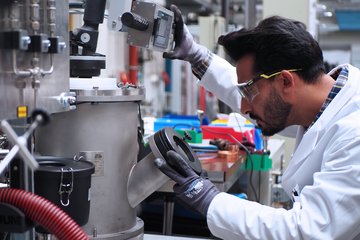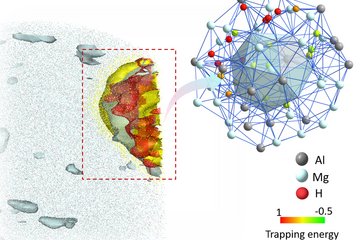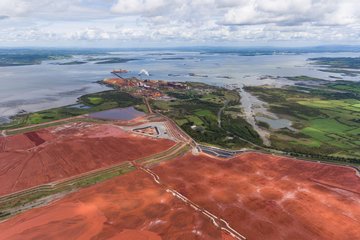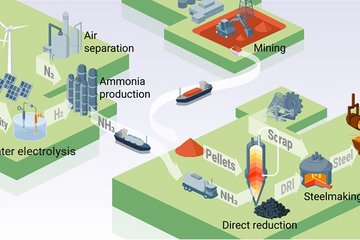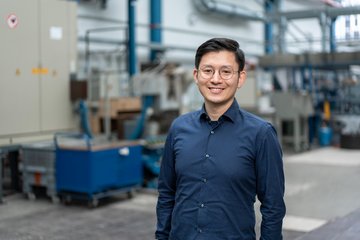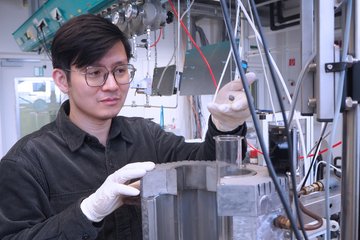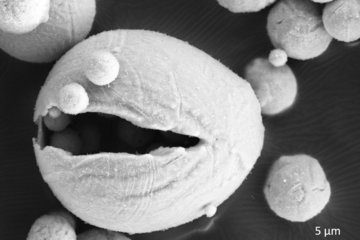Alle Typen
21.
Zeitschriftenartikel
Non-local Thermoelasticity Based on Equilibrium Statistical Thermodynamics. Journal of Elasticity 139, S. 37 - 59 (2020)
22.
Zeitschriftenartikel
Atomistic phase field chemomechanical modeling of dislocation-solute-precipitate interaction in Ni–Al–Co. Acta Materialia 175, S. 250 - 261 (2019)
23.
Zeitschriftenartikel
A comparison of different continuum approaches in modeling mixed-type dislocations in Al. Modelling and Simulation in Materials Science and Engineering 27 (7), 074004 (2019)
24.
Zeitschriftenartikel
A simple and flexible model order reduction method for FFT-based homogenization problems using a sparse sampling technique. Computer Methods in Applied Mechanics and Engineering 347, S. 622 - 638 (2019)
25.
Zeitschriftenartikel
Alloy design for mechanical properties: Conquering the length scales. MRS Bulletin 44 (4), S. 257 - 265 (2019)
26.
Zeitschriftenartikel
A computational approach towards modellingdislocation transmission across phase boundaries. Philosophical Magazine 99 (17), S. 2126 - 2151 (2019)
27.
Zeitschriftenartikel
Phase-field-based calculations of the disregistry fields of static extended dislocations in FCC metals. Philosophical Magazine, S. 1400 - 1428 (2019)
28.
Zeitschriftenartikel
Tunable twin stability and an accurate magnesium interatomic potential for dislocation-twin interactions. Materials and Design 153, S. 232 - 241 (2018)
29.
Zeitschriftenartikel
Efficient and accurate two-scale FE-FFT-based prediction of the effective material behavior of elasto-viscoplastic polycrystals. Computational Mechanics 61, S. 751 - 764 (2018)
30.
Zeitschriftenartikel
The concept of control points in hybrid discontinuous Galerkin methods—Application to geometrically nonlinear crystal plasticity. International Journal for Numerical Methods in Engineering 114 (5), S. 557 - 579 (2018)
31.
Zeitschriftenartikel
Finite-deformation phase-field chemomechanics for multiphase, multicomponent solids. Journal of the Mechanics and Physics of Solids 112, S. 619 - 636 (2018)
32.
Zeitschriftenartikel
Laminate-based modelling of single and polycrystalline ferroelectric materials – application to tetragonal barium titanate. Mechanics of Materials 117, S. 235 - 254 (2018)
33.
Zeitschriftenartikel
Competitive bcc and fcc crystal nucleation from non-equilibrium liquids studied by phase-field crystal simulation. Acta Materialia 139, S. 196 - 204 (2017)
34.
Zeitschriftenartikel
Modelling of grain boundary dynamics using amplitude equations. Continuum Mechanics and Thermodynamics 29 (4), S. 895 - 911 (2017)
35.
Zeitschriftenartikel
Formulation of strongly non-local, non-isothermal dynamics for heterogeneous solids based on the GENERIC with application to phase-field modeling. Materials Theory (1), 4, S. 1 - 20 (2017)
36.
Zeitschriftenartikel
Elasto-viscoplastic phase field modelling of anisotropic cleavage fracture. Journal of the Mechanics and Physics of Solids 99, S. 19 - 34 (2017)
37.
Zeitschriftenartikel
A phase field model for damage in elasto-viscoplastic materials. Computer Methods in Applied Mechanics and Engineering 312, S. 167 - 185 (2016)
38.
Zeitschriftenartikel
Theoretical and computational comparison of models for dislocation dissociation and stacking fault/core formation in fcc crystals. Journal of the Mechanics and Physics of Solids 95, S. 719 - 741 (2016)
39.
Zeitschriftenartikel
Two-scale FE–FFT- and phase-field-based computational modeling of bulk microstructural evolution and macroscopic material behavior. Computer Methods in Applied Mechanics and Engineering 305, S. 89 - 110 (2016)
40.
Zeitschriftenartikel
Nonlinear elastic effects in phase field crystal and amplitude equations: Comparison to ab initio simulations of bcc metals and graphene. Physical Review B 93 (21), 214105 (2016)
